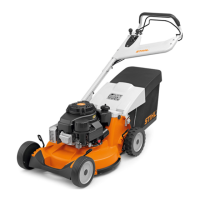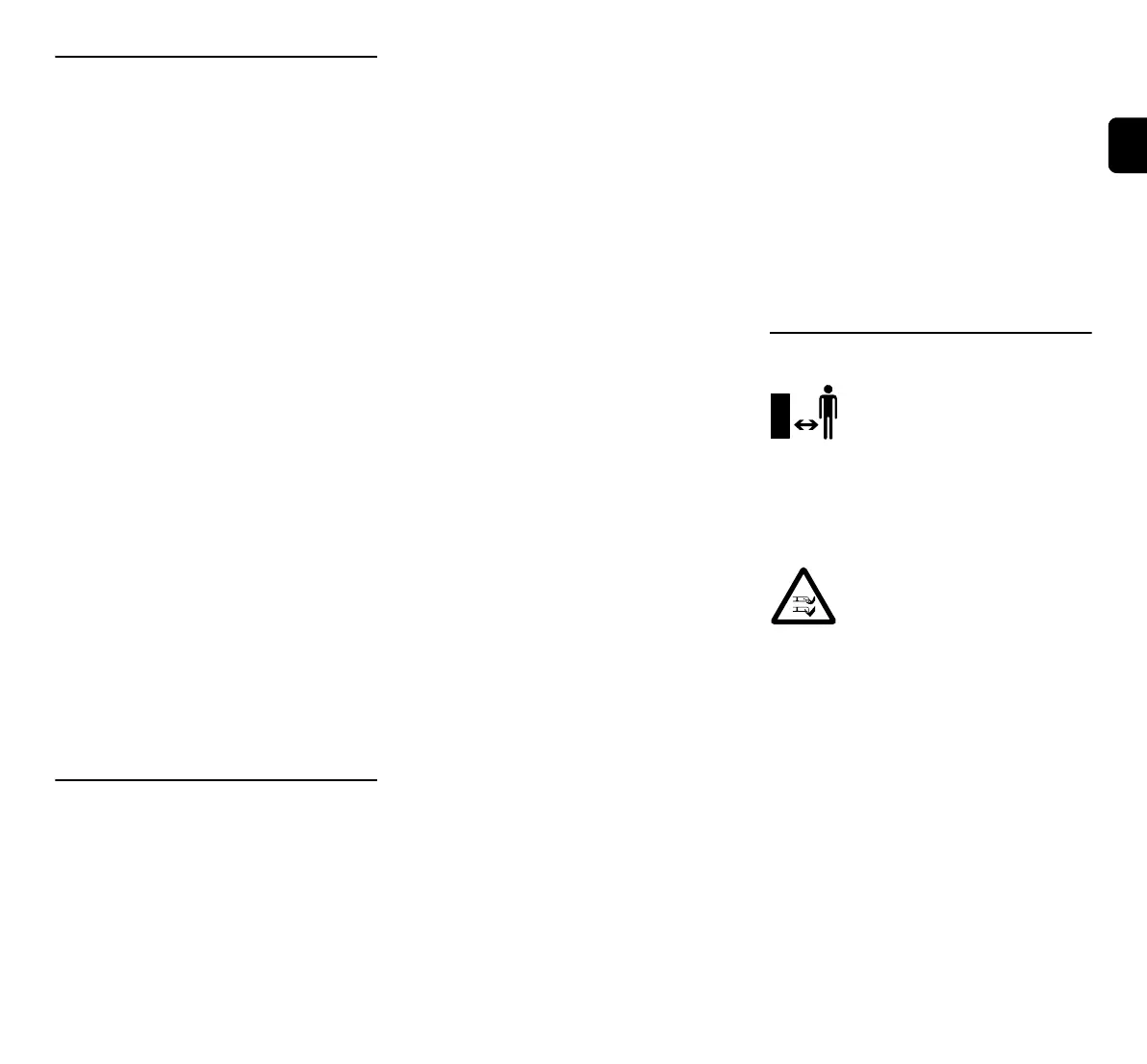39
DEFRNLITESPTNOSVFIDAPLSKHUSR EN
0478 111 9937 B - EN
4.4 Transporting the machine
Always wear gloves in order to prevent
injuries due to sharp-edged and hot
components.
Do not transport the machine with the
engine running. Switch off the engine, let
the blades come to a standstill, close the
tank ventilation screw and fuel cock and
remove the spark plug socket prior to
transport.
Only transport the machine once the
engine has cooled down.
Use suitable loading aids (loading ramps,
lifters).
Do not drop the machine.
Secure the machine and any machine
components being transported (e.g. grass
catcher box) on the load floor using
fastening material of adequate size (belts,
ropes, etc.).
Avoid contact with the mowing blade when
lifting and carrying the machine.
Observe the information in the section
"Transport". It describes how to lift and
lash the machine. (Ö 12.)
When transporting the machine, always
observe regional legislation, especially
regarding load security and the transport
of objects on load floors.
4.5 Before operation
Make sure that only persons who are
familiar with the instruction manual are
permitted to use the machine.
Check the fuel system (particularly visible
parts such as e.g. tank, tank cap, hose
connections) before operating the
machine. In the event of any leaks or
damage, do not start the engine – fire
hazard!
Have the machine repaired by a specialist
dealer prior to operation.
Observe the local regulations regarding
permitted operating times for gardening
power tools with combustion engines or
electric motors.
Carefully inspect the complete area on
which the machine is to be used and
remove any stones, sticks, wires, bones
and other foreign objects which could be
thrown up by the machine. Obstacles (e.g.
tree stumps, roots) can be easily
overlooked in long grass.
For this reason, mark all foreign objects
(obstacles) which are hidden in the lawn
and cannot be removed before
commencing work with the machine.
All faulty, worn or damaged parts must be
replaced before using the machine.
Replace any illegible or damaged danger
signs and warnings on the machine. Your
STIHL specialist has a supply of
replacement stickers and all the other
spare parts.
The machine must only be used in good
operating condition. Before each use,
check whether:
– The machine is properly assembled.
– The cutting tool and the entire cutting
unit (mowing blade, fastening elements,
mowing deck housing) are in good
condition. In particular check for secure
fastening, damage (notches or cracks)
and wear. (Ö 11.6)
– The tank cap is properly attached.
– The tank and fuel-carrying parts as well
as the tank cap are in good condition.
– The safety devices (e.g. blade brake
clutch, discharge flap, housing,
handlebar, protective grille) are in good
condition and working properly.
– The grass catcher box is undamaged
and correctly installed; a damaged
grass catcher box must not be used.
– The oil tank cap is screwed on properly.
Carry out any necessary work or consult a
specialist dealer. STIHL recommends
STIHL specialist dealers.
4.6 Working with your machine
Never work when animals or
persons, particularly children,
are in the danger area.
The switch and safety devices installed in
the machine must not be removed or
bypassed. In particular, never secure the
blade stop lever to the handlebar (e.g. by
tying it).
Caution – risk of injury!
Never put hands or feet on or
underneath rotating parts.
Never touch the rotating blade.
Always keep away from the discharge
opening.
Always observe the safety distance
provided by the handlebar. The handlebar
must always be installed correctly and
must not be modified. Never operate the
machine with the handlebar folded down.
Never attach any objects to the handlebar
(e.g. work clothing).
Only work during the day or with good
artificial light.
Do not operate the machine in the rain or
during thunder storms, particularly when
there is a risk of lightning strike.

